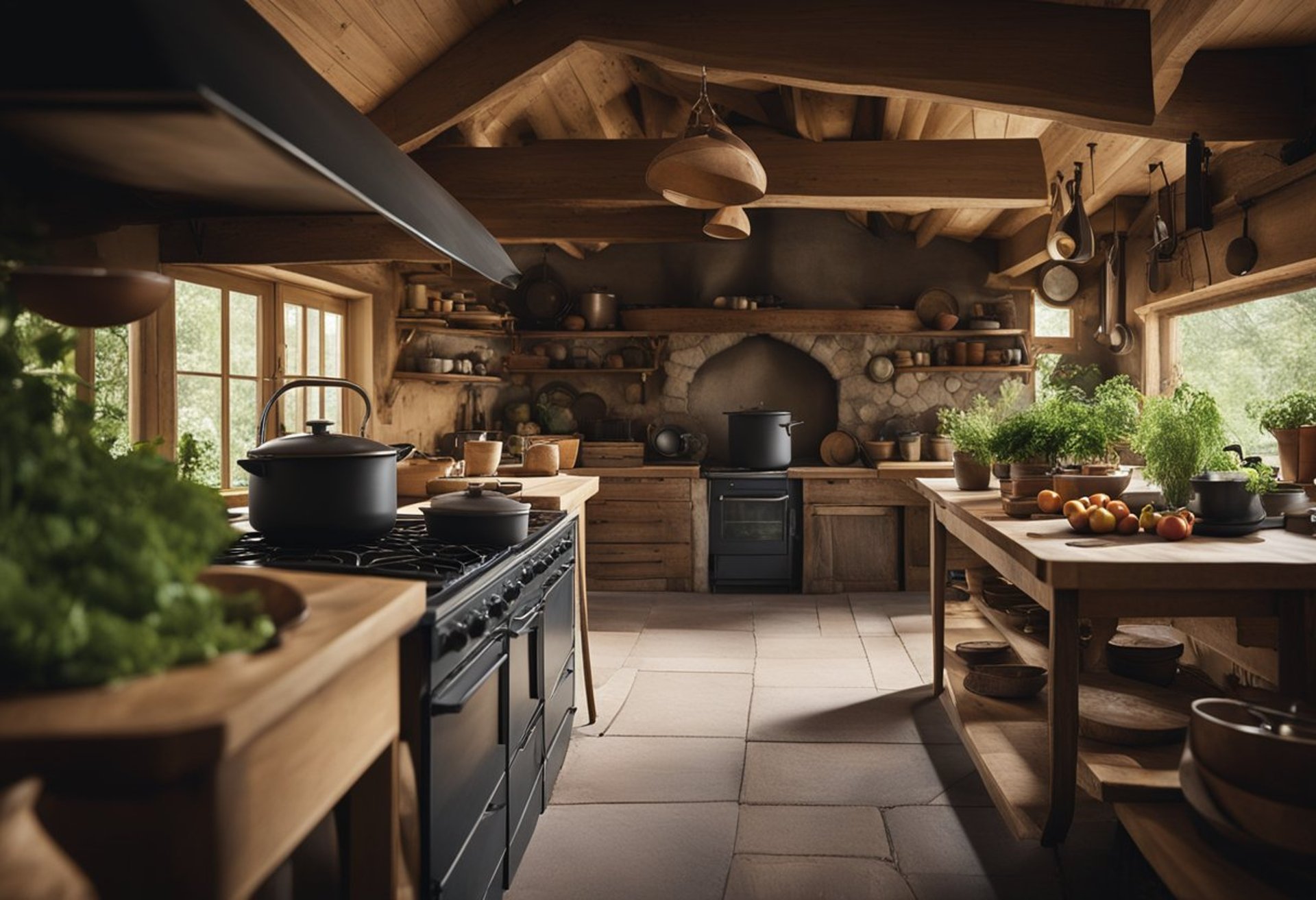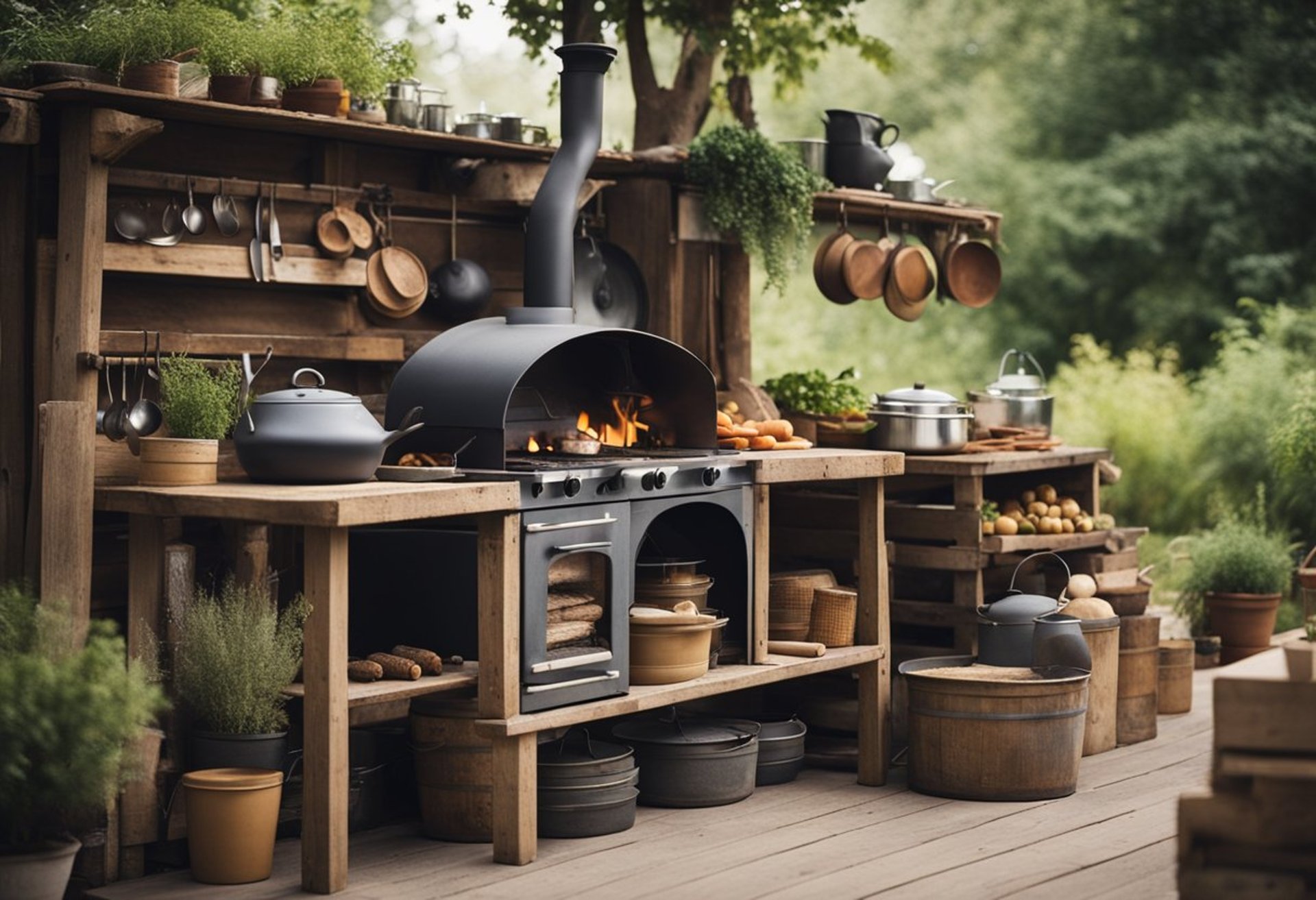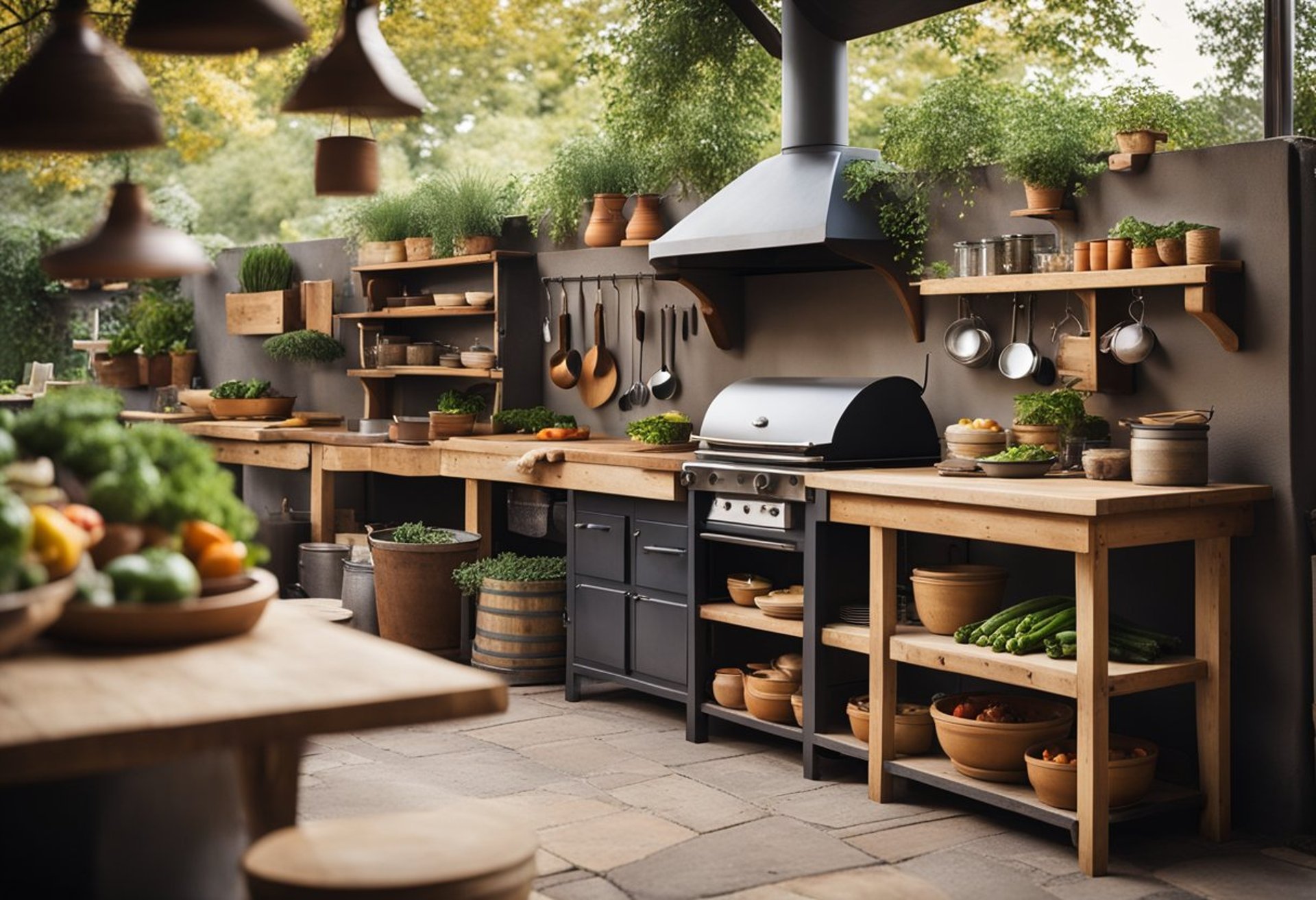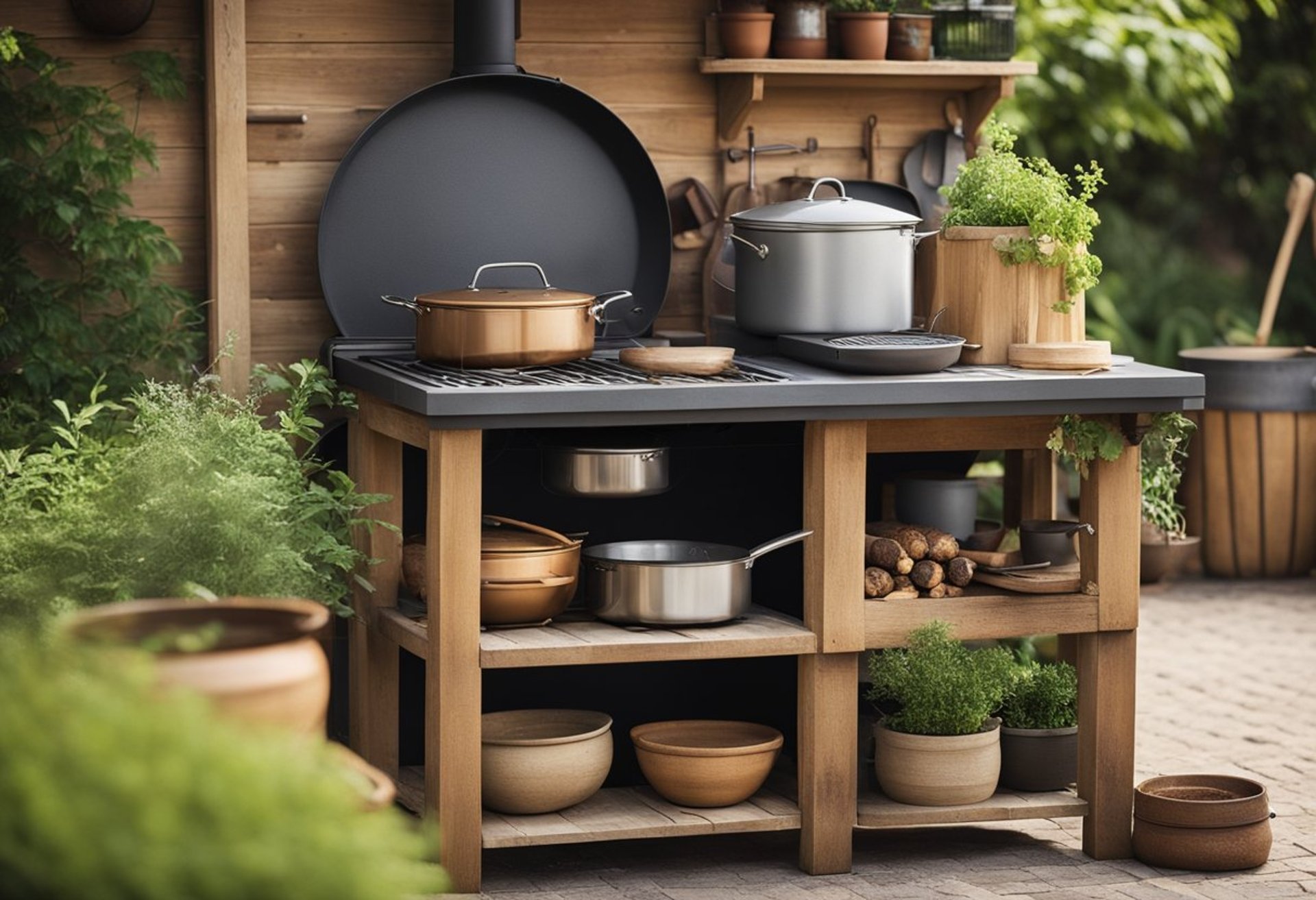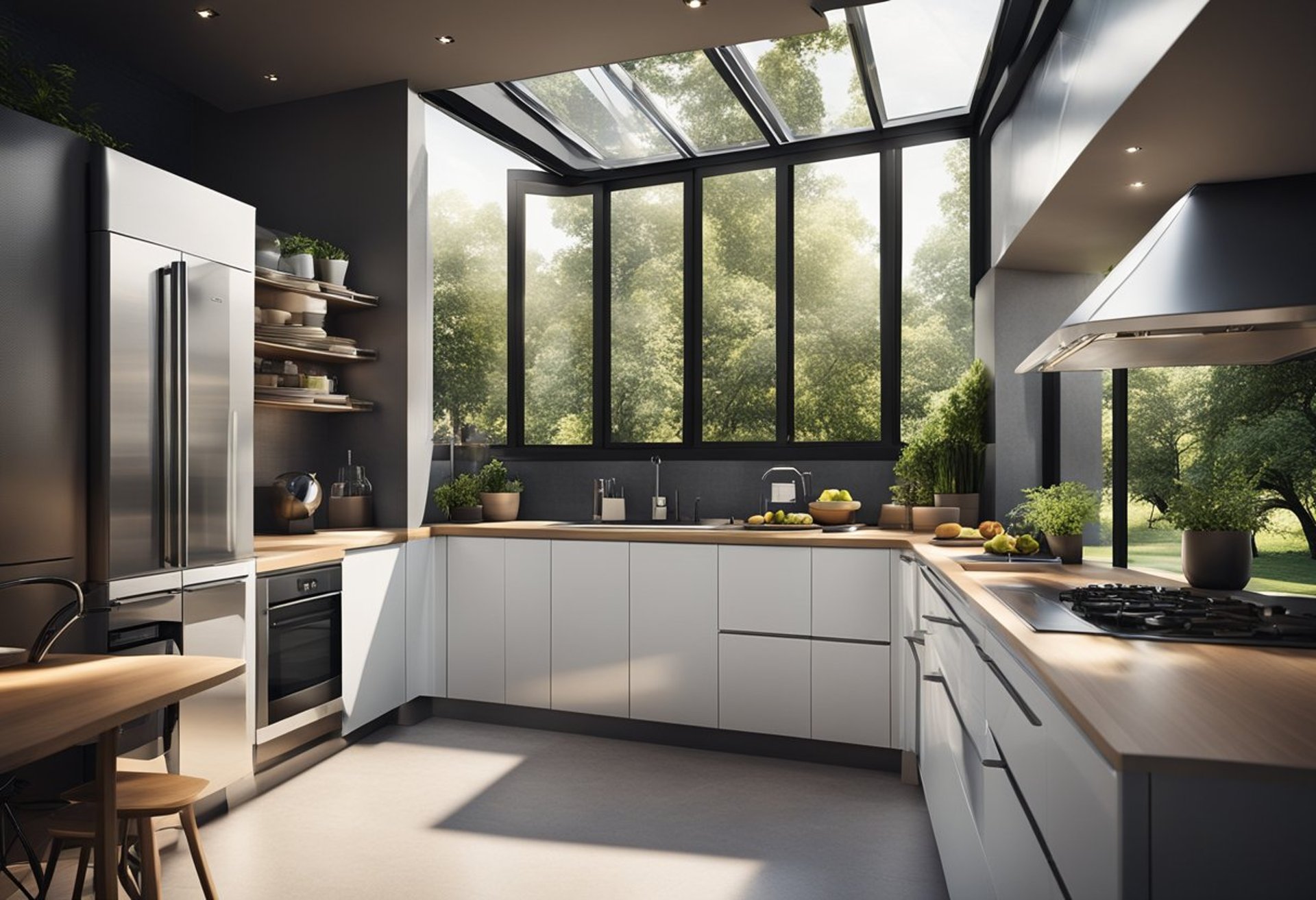Off the Grid Kitchen: Creating Sustainable Cooking Spaces in Nature
An off the grid kitchen is designed to operate independently of traditional utilities, using renewable resources to create a sustainable cooking environment. These kitchens emphasize self-sufficiency by incorporating systems like solar power, rainwater collection, and energy-efficient appliances. This innovative approach appeals to those seeking a simpler lifestyle or a way to reduce their environmental footprint.
Off the Grid Kitchen: Creating Sustainable Cooking Spaces in Nature
An off the grid kitchen is designed to operate independently of traditional utilities, using renewable resources to create a sustainable cooking environment. These kitchens emphasize self-sufficiency by incorporating systems like solar power, rainwater collection, and energy-efficient appliances. This innovative approach appeals to those seeking a simpler lifestyle or a way to reduce their environmental footprint.
Building an off the grid kitchen requires careful planning and thoughtful design. Key considerations include integrating sustainable materials, optimizing space, and selecting essential components that align with one's cooking habits. The result is a functional, eco-friendly kitchen that enhances the cooking experience while fostering a connection to nature.
Individuals interested in minimizing their reliance on the grid will find valuable insights in exploring various concepts and case studies showcasing successful off the grid kitchens. From creative layouts to unique cooking methods, these examples inspire and guide those ready to embark on their self-sufficient culinary journey.
Key Takeaways
Off the grid kitchens provide independence from traditional utilities.
Planning requires consideration of sustainable materials and essential components.
Case studies showcase creative designs and innovative cooking methods.
Understanding Off the Grid Kitchens
Off the grid kitchens prioritize self-sufficiency and sustainability. This approach enables individuals to create food and meals without reliance on traditional utilities or resources.
Defining the Off Grid Kitchen Concept
An off the grid kitchen is designed to function independently from municipal utilities, such as electricity, gas, and water. It often incorporates sustainable practices and materials.
Key components include:
Energy Sources: Solar panels, wind turbines, and biomass systems provide power.
Water Management: Rainwater harvesting and filtration systems ensure clean water access.
Waste Management: Composting toilets and biodegradable waste systems minimize environmental impact.
These elements work together to create a self-sustaining food preparation space.
Benefits of an Off Grid Kitchen
The off grid kitchen offers numerous advantages. First, it promotes sustainability by reducing dependence on fossil fuels and lowering carbon footprints.
Additionally, it encourages:
Cost Savings: Lower utility bills contribute to long-term savings.
Food Security: Growing one's own food ensures access to fresh produce and reduces food waste.
Resilience: It equips individuals to handle emergencies or disruptions in traditional supply chains.
These benefits make off grid kitchens appealing for those seeking a more autonomous lifestyle.
Planning and Designing Your Off the Grid Kitchen
Creating an off the grid kitchen requires thoughtful planning and design to meet specific needs and constraints. This section outlines essential considerations for assessing needs, applying design principles, and choosing an optimal location.
Assessing Your Needs and Constraints
The first step in planning is identifying individual cooking and food storage needs. Consider how often meals will be prepared and whether there is a requirement for large-scale cooking or preservation methods, like canning.
Evaluate available resources:
Water Supply: Determine access to a sustainable water source.
Energy Source: Consider solar panels, wind turbines, or wood stoves for power.
Also, assess space limitations and local regulations that might impact designs. Careful assessment ensures the kitchen operates effectively in a sustainable manner.
Design Principles for Off the Grid Kitchens
Designing an off the grid kitchen means prioritizing efficiency and sustainability. Utilize natural materials like wood and stone for construction to blend with the environment.
Layout: An open layout can improve airflow and reduce the need for mechanical cooling.
Work Zones: Create specific areas for prep, cooking, and cleanup to optimize workflow.
Ventilation: Implement natural ventilation strategies to remove heat and odors.
Incorporate features like raised garden beds to promote a sustainable food source. Off grid kitchen ideas should focus on functionality while maintaining rustic aesthetics.
Choosing a Location for Your Outdoor Kitchen
Selecting the right location for an outside kitchen is crucial. Look for areas that provide adequate sunlight, protection from strong winds, and proximity to water.
Accessibility: Ensure easy access from both the main living areas and food supply sources.
Climate Considerations: Study local weather patterns to determine shelter needs or landscaping elements that may provide windbreaks.
Incorporating natural features can enhance the kitchen while ensuring it harmonizes with the surrounding environment. A well-considered location fosters comfort and practicality for outdoor cooking experiences.
Essential Components of Off the Grid Kitchens
An off the grid kitchen requires careful planning to ensure sustainability and functionality. Key aspects include energy sources, water systems, and waste management, which must all support a self-sufficient lifestyle.
Energy Sources and Solutions
Energy in off the grid kitchens often comes from renewable sources. Solar panels are a primary option. They can power appliances, lights, and water pumps. The installation of a solar generator ensures a steady supply of electricity, even during cloudy weather.
Wind turbines serve as another solution, particularly in windy areas. They can reduce reliance on solar energy, providing an additional layer of sustainability.
For heating, energy-efficient wood stoves are popular. Not only do they heat the kitchen, but they can also cook food. A combination of these sources creates a reliable and eco-friendly energy system.
Water Collection and Filtration Systems
Water collection is crucial for off the grid kitchens. Rainwater harvesting systems capture and store rainwater from rooftops into large tanks. This provides a sustainable water supply for cooking and cleaning.
Filtration systems are necessary to ensure that the collected water is safe to use. Common options include carbon filters and UV purifiers. These remove impurities and improve taste.
For those near a freshwater source, a pump system can draw water directly. Incorporating effective collection and filtration systems guarantees a reliable and clean water supply.
Waste Management and Composting
Waste management is vital for minimizing environmental impact. An off the grid kitchen often uses composting systems to break down organic waste. This process transforms food scraps into nutrient-rich compost, which can be used to enrich soil.
Separating waste into recyclables, compostable materials, and non-recyclables streamlines disposal. Simple bins labeled clearly help in this organization.
Portable waste treatment systems are available for managing gray water from sinks and showers. These systems treat water without the need for extensive plumbing setups, making them ideal for off grid applications.
Building Your Off the Grid Kitchen
Creating an off the grid kitchen involves careful planning and selection of appropriate materials. It is essential to consider construction methods that promote sustainability and efficiency.
Materials and Tools Required
Choosing the right materials is crucial for durability and functionality. Common choices include:
Reclaimed wood: Often used for countertops and cabinets, it adds a rustic touch.
Stone or brick: Ideal for outdoor kitchens, providing stability and heat retention.
Stainless steel: A good option for appliances due to its resistance to corrosion.
Essential tools for constructing an off the grid kitchen include:
Saw: For cutting wood and other materials.
Drill: Useful for assembling structures.
Level: Ensures surfaces are even.
Incorporating environmentally friendly options like bamboo or recycled materials enhances sustainability.
Construction Tips and Techniques
Start by selecting a suitable location with adequate sunlight and protection from the elements. Plan the layout to optimize space and workflow.
When building, consider these techniques:
Use natural ventilation: Incorporate windows for airflow, reducing reliance on electric fans.
Install a rainwater collection system: Useful for a sustainable water source.
Create shaded areas: Use pergolas or awnings to protect cooking spaces from direct sunlight.
Utilizing local resources not only supports the community but also minimizes environmental impact. Consider adding solar panels for energy needs.
Cooking Off the Grid
Cooking off the grid involves specific appliances and methods that prioritize efficiency and sustainability. This approach allows individuals to prepare nourishing meals without reliance on conventional power sources.
Selecting Off the Grid Appliances
When choosing appliances for an off the grid kitchen, consider energy efficiency and functionality. Ideal options include:
Solar Ovens: Harness sunlight to cook meals slowly and evenly. They are portable and require no fuel, making them eco-friendly.
Propane Stoves: Provide flexibility and control over cooking with minimal infrastructure. They are suitable for a wide range of cooking tasks.
Hand-Crank Mixers: Useful for baking while conserving energy. They allow for simple preparation without electrical dependence.
Additional considerations include the durability of materials and ease of maintenance. Selecting compact and versatile appliances can optimize limited space typically found in off the grid setups.
Off the Grid Cooking Methods
Cooking off the grid involves diverse techniques that maximize resources. Key methods include:
Open Fire Cooking: This traditional method uses wood or charcoal. It can be adapted for various preparations, such as grilling or boiling.
Canning and Preserving: By preserving seasonal foods, individuals can create off the grid meals that last. This reduces waste and maximizes the availability of ingredients.
Dehydrating: Removing moisture from fruits and vegetables allows for long-term storage. Dehydrators or solar dehydration methods can achieve this effectively.
These cooking methods emphasize resourcefulness and creativity, ensuring that meals remain flavorful and nutritious.
Living with an Off the Grid Kitchen
Living with an off the grid kitchen requires a commitment to daily maintenance and thoughtful preparation for seasonal variations. By understanding both the upkeep and the weatherproofing needed, owners can create a functional and self-sufficient space.
Daily Maintenance and Upkeep
Maintaining an off the grid kitchen involves several key tasks for optimum functionality. Regular cleaning is essential, especially for appliances that rely on solar or battery power. Ensuring cleanliness extends the lifespan of equipment and improves efficiency.
Food storage requires attention. Properly managing supplies can prevent spoilage, especially without refrigeration. Utilizing airtight containers can help preserve food quality.
Water management is also crucial. Regularly checking water filters and storage tanks prevents contamination and ensures ample supply. A checklist can aid in daily tasks:
Clean surfaces and appliances
Check water supply
Inspect solar panels and batteries
These steps contribute to a smooth operation, enabling a sustainable cooking environment.
Seasonal Considerations and Weatherproofing
Different seasons bring unique challenges for an off the grid kitchen. In winter, insulation becomes vital to protect pipes and prevent freezing. Using heat lamps or insulating covers can help maintain a stable temperature.
Summer poses its own issues, such as preserving food without refrigeration. Techniques like canning, drying, and using cool storage methods can be beneficial.
Weatherproofing kitchen structures is important. Materials that resist moisture and extreme temperatures should be prioritized. For instance, using weather-resistant paint or sealants protects against humidity and pests, ensuring the kitchen remains functional and efficient year-round.
Awareness of local climate conditions empowers individuals to make informed decisions about their off the grid kitchens.
Innovative Off the Grid Kitchen Concepts
Innovative kitchen designs for off-the-grid living focus on maximizing space and integrating sustainable technology. These concepts allow for efficient cooking and food storage while minimizing reliance on conventional utilities.
Maximizing Space and Functionality
In off-the-grid outdoor kitchens, space is a premium. Creative designs often utilize vertical storage solutions, such as shelves and cabinets mounted on walls. This can increase available counter space and help organize kitchen tools efficiently.
Using multi-functional furniture is another effective strategy. Portable carts that serve as prep stations and dining surfaces can be moved as needed. Additionally, modular systems allow for adjustments based on cooking requirements or gatherings.
Sustainable materials play a crucial role in this design approach. Reclaimed wood for cabinets and countertops adds rustic charm while reducing environmental impact. Incorporating composting areas and herb gardens can connect the cooking experience to one’s surroundings.
Integrating Technology Sustainably
Sustainable technology is vital in off the grid kitchens, merging modern conveniences with eco-friendly practices. Solar panels are commonly used to power appliances, ensuring energy independence.
Water conservation becomes essential as well. Rainwater harvesting systems collect water for dishwashing and irrigation, significantly reducing consumption. Additionally, energy-efficient appliances minimize power usage and maintain functionality.
Smart cooking devices are gaining popularity. Solar cookers and rocket stoves allow for effective cooking without relying on traditional fuels. The efficient design of these technologies aligns well with off-grid principles, enabling a balanced, eco-friendly culinary experience.
Case Studies and Inspirational Examples
Exploring real-life examples of off the grid kitchens offers insights into practical implementations and creative designs. These profiles exemplify how individuals can thrive in self-sufficient environments while enjoying the outdoors.
Profiles of Successful Off the Grid Kitchens
Rustic Outdoor Kitchen in Vermont
This kitchen features a wood-fired pizza oven and a large, stone grill, allowing for diverse cooking options. It utilizes reclaimed wood and locally sourced stone, blending seamlessly with the natural surroundings. Rainwater collection systems maintain the garden area, enhancing self-sufficiency.
Modern Off the Grid Kitchen in California
A sustainable structure with solar panels clearly demonstrates innovation. Equipped with energy-efficient appliances and a hydroponic garden, this kitchen maximizes fresh produce year-round. The open design encourages social interaction while being fully functional and environmentally friendly.
Compact Outside Kitchen in Texas
This small-scale kitchen showcases how limited space can still promote off-grid living. It incorporates a portable grill, a compact sink, and countertop space made from recycled materials. With ample storage solutions, it remains practical without sacrificing aesthetics.
Eco-Friendly Outdoor Cooking Station in Oregon
A unique kitchen that blends sustainability and style. It includes a compost area and a fire pit for cooking, demonstrating waste management and energy use. Outdoor seating enhances the experience, making it a functional and atmospheric cooking spot.

